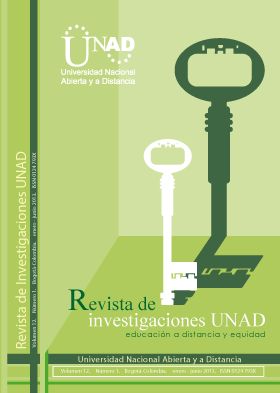Cuando la REVISTA DE INVESTIGACIONES UNAD recibe la postulación de un original por parte de su autor, ya sea a través de correo electrónico o postal, considera que puede publicarse en formatos físicos y/o electrónicos y facilitar su inclusión en bases de datos, hemerotecas y demás sistemas y procesos de indexación. REVISTA DE INVESTIGACIONES UNAD autoriza la reproducción y citación del material de la revista, siempre y cuando se indique de manera explícita el nombre de la revista, los autores, el título del artículo, volumen, número y páginas. Las ideas y conceptos expresados en los artículos son responsabilidad de los autores y en ningún caso reflejan las políticas institucionales de la UNAD
Teaching and didactics strategies for the development of multiple intelligence and autonomous learning
The main goal was to make students and teachers aware of the teaching strategies significance from Gardner’s proposal. Also of the importance of strategic planning based on daily life environment which after being recognized becomes an active and creative new ways that stimulate the motivational process towards knowledge. Thus facilitate student's learning process, strengthen the development of the individual and promote multiple intelligences.




